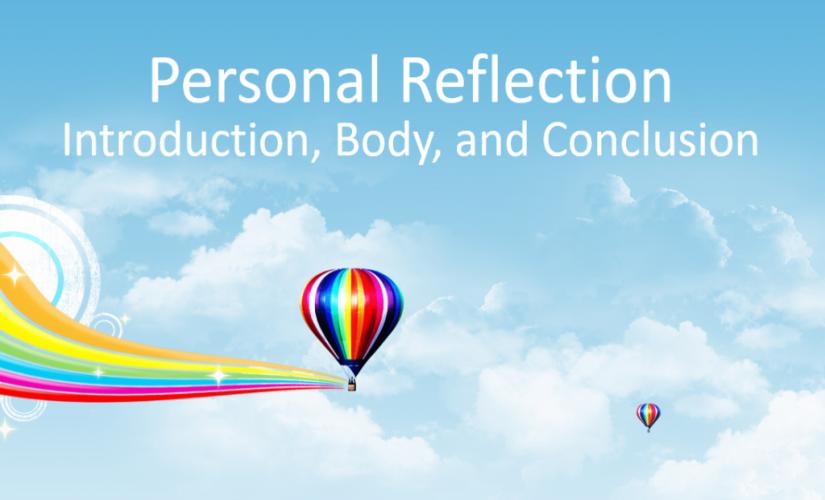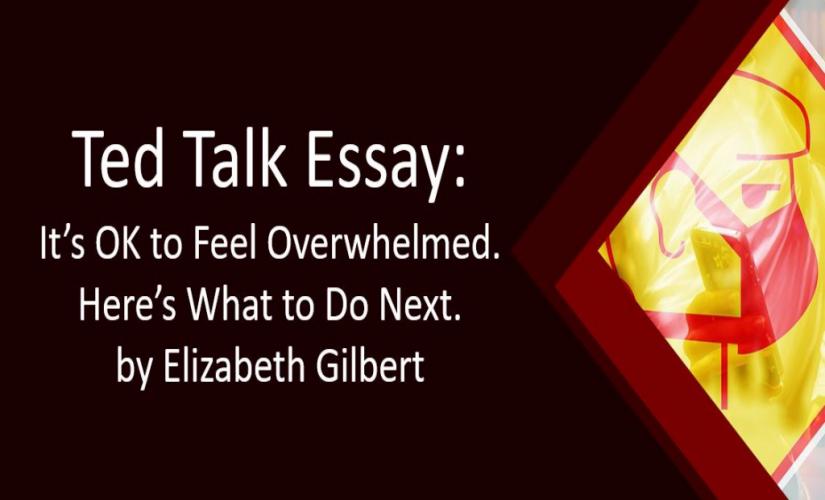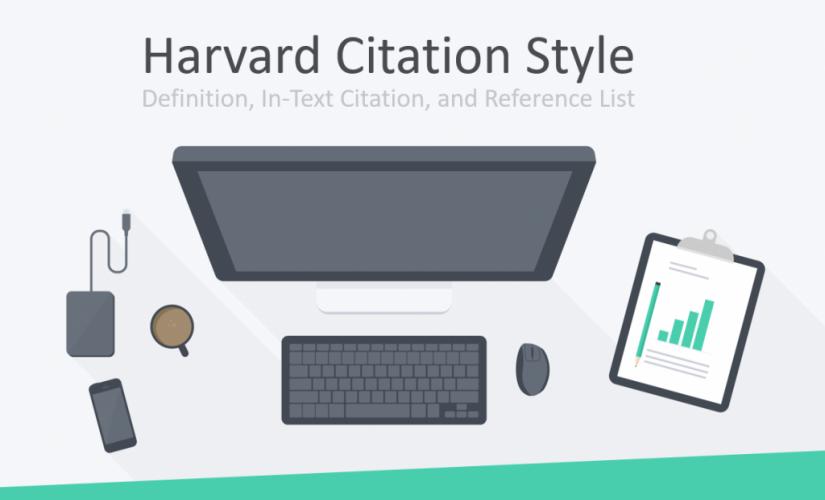Nowadays, personal reflection is an educational concept in learning, which determines a success level of scholars. Basically, teachers use this process to examine how students relate their knowledge to real-life situations. On the other hand, people express their thoughts, feelings, and insights about a specific experience, examining its significance and impact on their personal growth and understanding. Moreover, they use these papers to express their level of comprehension. In particular, an effective personal reflection should have an informative introduction, a supportive body, and a conclusion.
What Is Personal Reflection and Its Purpose
According to its definition, personal reflection is a self-analysis process of examining one’s own experiences, thoughts, and feelings. Basically, this practice involves taking the time to think deeply about past events and actions, understanding their significance in life, and recognizing specific emotions they evoke (Bassot, 2023). In this case, the main purpose of writing a personal reflection paper is to gain a better understanding of oneself, promoting personal growth and self-awareness. By revisiting past experiences and considering their impacts, people can identify particular patterns, recognize their own strengths and weaknesses, and learn from their actions and decisions (Olmos-Ochoa et al., 2021). Moreover, whether written in essays or research papers or shared through conversations with other individuals, such documents serve as a vital tool for self-improvement. In terms of words and pages, the length of writing a personal reflection essay can vary based on specific assignment guidelines, academic discipline, and instructor preferences, while general guidelines are:
High School:
- Pages: 1-2 pages
- Words: 250-500 words
College:
- Pages: 2-4 pages
- Words: 500-1,000 words
University (Undergraduate):
- Pages: 3-5 pages
- Words: 750-1,250 words
Master’s:
- Pages: 5-7 pages
- Words: 1,250-1,750 words
Ph.D.:
- Pages: 7-10 pages
- Words: 1,750-2,500 words

Format
| Section | Description | Length |
|---|---|---|
| Title | Includes a descriptive title reflecting an essay’s content. | 1-2 lines |
| Introduction | Briefly introduces an assigned topic, provides context, and states a main purpose or thesis of a reflection | 1 paragraph |
| Thesis Statement | Provides an essay’s roadmap to body paragraphs and your key lesson. | 1 sentence |
| Body Paragraph 1 | Describes a specific experience or event, including detailed observations and feelings. | 1-2 paragraphs |
| Body Paragraph 2 | Analyzes a particular moment, discussing its significance and what was learned. | 1-2 paragraphs |
| Body Paragraph 3 | Connects an event to broader themes or personal growth, considering future implications. | 1-2 paragraphs |
| Conclusion | Summarizes key insights, reflects on an overall impact of an experience, and restates a central thesis | 1 paragraph |
| References (If required) | Lists any sources cited in a personal reflection paper, formatted according to a required referencing style, such as MLA, APA, Chicago/Turabian, Harvard, and others. |
Note: Some sections or paragraphs can be added, deleted, or combined with each other, and it depends on an essay’s length, purpose, and instructor requirements. Hence, a personal reflection paper consists of an introduction, a detailed description of a specific experience, an analysis of its impact, and a conclusion summarizing the insights and lessons learned.
Steps on How to Write a Personal Reflection Paper
To write a personal reflection paper, people honestly describe a significant experience, analyze its impact on them, connect it to broader themes, and discuss its future implications for their individual growth and future actions. As such, basic steps include:
- Choose a Topic: Start with selecting an experience, event, or moment that has had a significant impact on you.
- Brainstorm and Take Notes: Reflect on a chosen topic, write down your thoughts, feelings, and any relevant details, and consider how a specific moment affected you and what you learned from it.
- Create an Outline: Organize your life moments and thoughts into a structured outline, including an introduction (ending with a thesis statement), a body (each paragraph focusing on a different aspect of your reflection), and a conclusion (summarizing your life lesson).
- Write an Introduction: Introduce a specific topic, provide its context, and state a purpose or main idea of your reflection.
- Describe Your Experience: Use vivid details to describe a particular experience, moment, or event.
- Analyze Your Experience: Reflect on your accident’s significance, discuss what you learned and how it affected you, and consider both positive and negative aspects.
- Connect to Broader Themes: Relate your life moment to larger themes, concepts, or life lessons and explain how this event fits into your broader life journey or personal growth.
- Consider Future Implications: Write about how this experience will influence your future actions or decisions and discuss any changes in perspective or behavior that resulted from it.
- Write a Conclusion: Summarize key points of your reflection, restate these insights or lessons learned, and end with a final thought or a forward-looking statement.
- Revise and Edit: Review your reflection for clarity, coherence, and organization, check for grammar, spelling, and punctuation errors, and ensure your writing is honest and authentic.
Introduction
Working papers contain an opening section that gives a clear picture of specific details presented. For example, to start a personal reflection paper, writers begin by introducing a specific experience or event they will be reflecting on and briefly explain its significance to them (Williams et al., 2020). In this case, a normal introduction paragraph provides an exciting opening and understanding of a paper. Moreover, one should use a catchphrase to grab a reader’s attention in writing a personal analysis. Further on, students must provide background information about their themes (Alt et al., 2022). Besides, successful learners present actions, thoughts, or characters that form a valid basis of an essay. In turn, individuals develop an effective thesis statement. As such, an introductory paragraph sets a context of such a composition. In turn, some examples of sentence starters for beginning a personal reflection essay are:
- An essential event that profoundly influenced me was one that occurred during … .
- Looking back on this period of my life, I realize that it was a time of significant … .
- A crucial moment in my life occurred when I encountered … .
- Reflecting on my past, I now understand that this particular event taught me about … .
- During this period, I felt a mix of emotions including … .
- This experience taught me that the most important lesson was about … .
- The most challenging aspect of this life moment was overcoming the feeling of … .
- In a broader context, I realized that this change was a reflection of … .
- Moving forward, I intend to apply the lessons learned from this accident by … .
- In particular, this experience has had a lasting impact on me by showing me the importance of … .
Body Paragraphs
A body section of personal reflection must describe one’s experience objectively. For example, students should identify questions to answer, which relate to particular actions or thoughts presented (Murphy & O’Mahony, 2023). In practice, learners identify a specific event, place of occurrence, and parties involved. Further on, this exercise helps readers to understand a primary significance of an essay. As such, students should provide a clear description of their subjects. In turn, writers can include references in a reflection paper by citing relevant sources that support their insights or provide additional context to essential experiences they discuss, using an appropriate citation style, like MLA, APA, Chicago/Turabian, Harvard, and others.
Examining Points
Quality body paragraphs of personal reflection examine a specific matter presented. For instance, people should identify an actual influence of an event on their comprehension (Whitney et al., 2019). In this case, one should relate the subject matter to knowledge acquired in class. Besides, successful students identify how they can embrace a particular experience in their daily lives. In turn, a detailed exploration of a topic allows people to express what they seek to achieve. Moroever, authors should suggest possible factors that promoted or discouraged an expected impact. Thus, scholars should include paragraphs that scrutinize a specific subject.
Presenting Lessons
Body paragraphs should articulate what learners gain from experience under investigation. For instance, students should deliver thoughtful essays after they identify what they learned and a particular method used (Bassot, 2023). Besides, they determine why a specific topic matters and enhance an overall quality of their work. In turn, one should consider possible actions that readers should adopt in light of an assigned theme. Therefore, the use of any personal reflection must articulate learning.
Conclusion Part
A conclusion section of personal reflection should leave a target audience with a lasting impression. In practice, one should remind readers of everything presented within other sections. Basically, a last paragraph must relate to an introduction and thesis statement and create a frame around a paper (Whitney et al., 2019). Further on, authors must avoid introducing new ideas and bring adequate closure to their essays. On the other hand, scholars may provide recommendations on how people can utilize the information. As a result, writers should end their papers and motivate a target audience to adapt their arguments.
What to Include
| Element | Description |
|---|---|
| Significant Experience | A specific event or experience that had a notable impact. |
| Emotional Reactions | Feelings and emotional responses to a particular moment. |
| Thoughts and Insights | Personal thoughts, insights, and realizations gained from a discussed accident. |
| Challenges Faced | Difficulties or obstacles encountered during an analyzed event. |
| Lessons Learned | Key lessons or takeaways from a past life moment. |
| Behavior Changes | How your past influenced or changed personal behavior or actions. |
| Personal Growth | Reflections on how your challenge contributed to personal growth and development. |
| Connections to Broader Themes | Explanations on how your episode relates to larger concepts, values, or beliefs. |
| Future Implications | How your experience will impact future actions, decisions, or perspectives. |
| Supporting Details | Specific details and examples that illustrate and support your reflections. |
Common Mistakes
- Lack of Depth: Writing simple reflections without exploring deeper thoughts and feelings.
- Vague Descriptions: Failing to provide specific details about essential experiences being reflected upon.
- Overly General Statements: Making broad statements without supporting them with concrete examples.
- Ignoring a Central Purpose: Not clearly connecting ideas to personal growth or learning outcomes.
- Poor Organization: Having a disorganized structure that makes it difficult to follow a paper.
- Overly Emotional Tone: Letting emotions dominate in a written document, leading to a lack of objectivity.
- Insufficient Analysis: Not adequately analyzing a particular significance of experiences or what was learned.
- Lack of Connection to Broader Themes: Failing to relate personal moments to larger themes or concepts.
- Ignoring Future Implications: Not considering how your change might influence future behaviors or decisions.
- Grammar and Spelling Errors: Neglecting to proofread for grammatical errors, typos, and spelling mistakes.
Summing Up
In conclusion, people use personal reflection papers to represent possible implications of events or subject matter. Firstly, effective essays should have an informative introduction, which sets a paper’s background. Secondly, an opening section influences readers to read through. In turn, people need to describe, examine, and articulate their events or ideas presented. Thirdly, a conclusion part should summarize the main points and bring an entire essay to a logical closure. As a result, to write a reflection of yourself, authors honestly describe their thoughts, feelings, and behaviors in response to specific experiences, analyze what they learned, and consider how these insights will influence their future actions.
References
Alt, D., Raichel, N., & Naamati-Schneider, L. (2022). Higher education students’ reflective journal writing and lifelong learning skills: Insights from an exploratory sequential study. Frontiers in Psychology, 12, 1–17. https://doi.org/10.3389/fpsyg.2021.707168
Bassot, B. (2023). The reflective practice guide: An interdisciplinary approach to critical reflection. Routledge.
Murphy, C., & O’Mahony, T. (2023). Submitting the ‘right’ reflection. Reflective Practice, 24(3), 347–360. https://doi.org/10.1080/14623943.2023.2198204
Olmos-Ochoa, T. T., Fenwick, K. M., Ganz, D. A., Chawla, N., Penney, L. S., Barnard, J. M., Miake-Lye, I. M., Hamilton, A. B., & Finley, E. P. (2021). Reflective writing: A tool to support continuous learning and improved effectiveness in implementation facilitators. Implementation Science Communications, 2(1), 1–8. https://doi.org/10.1186/s43058-021-00203-z
Whitney, A. E., McCracken, C. M., & Washell, D. (2019). Teaching writers to reflect: Strategies for a more thoughtful writing workshop. Heinemann.
Williams, K., Woolliams, M., & Spiro, J. (2020). Reflective writing. Red Globe Press.


